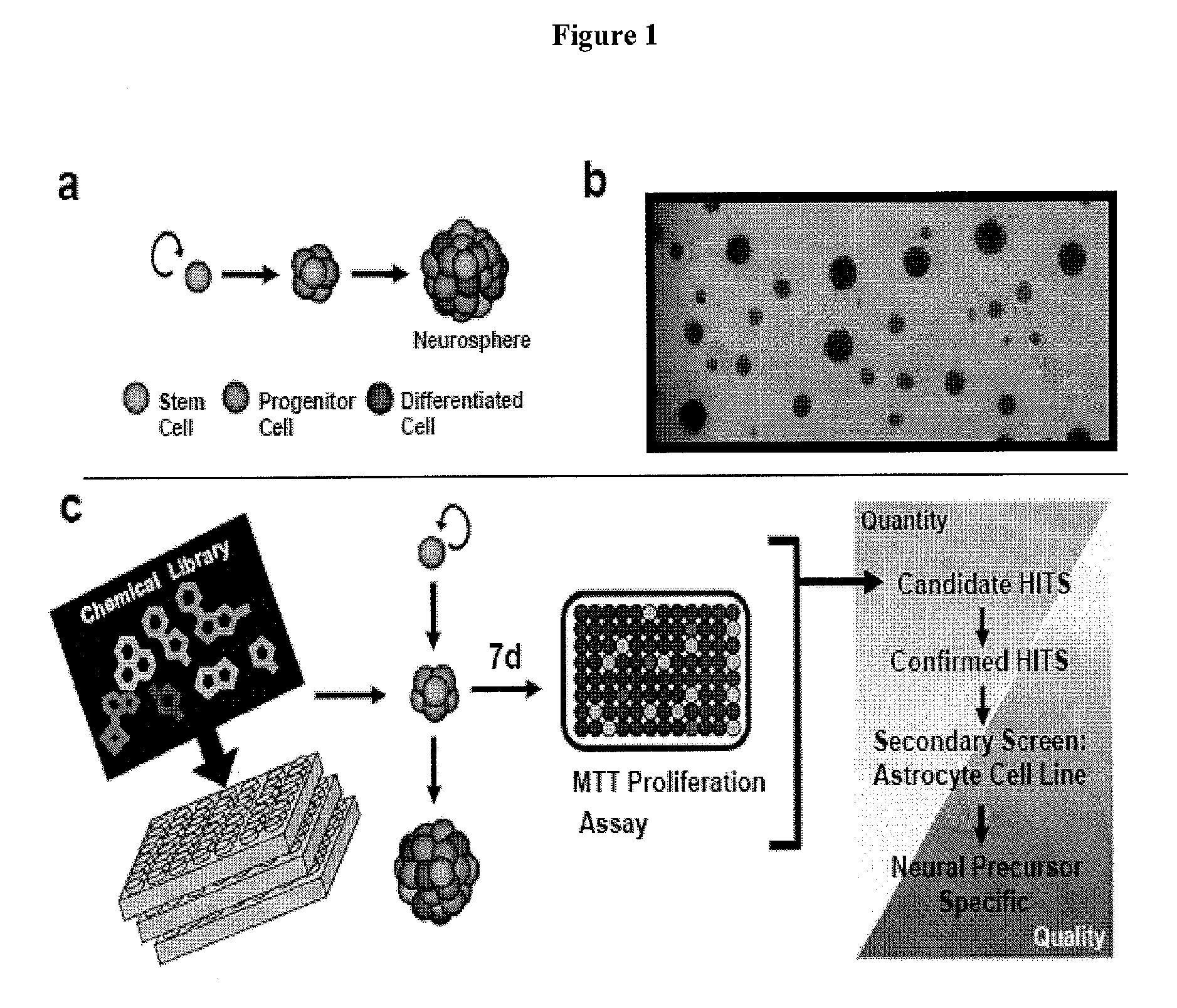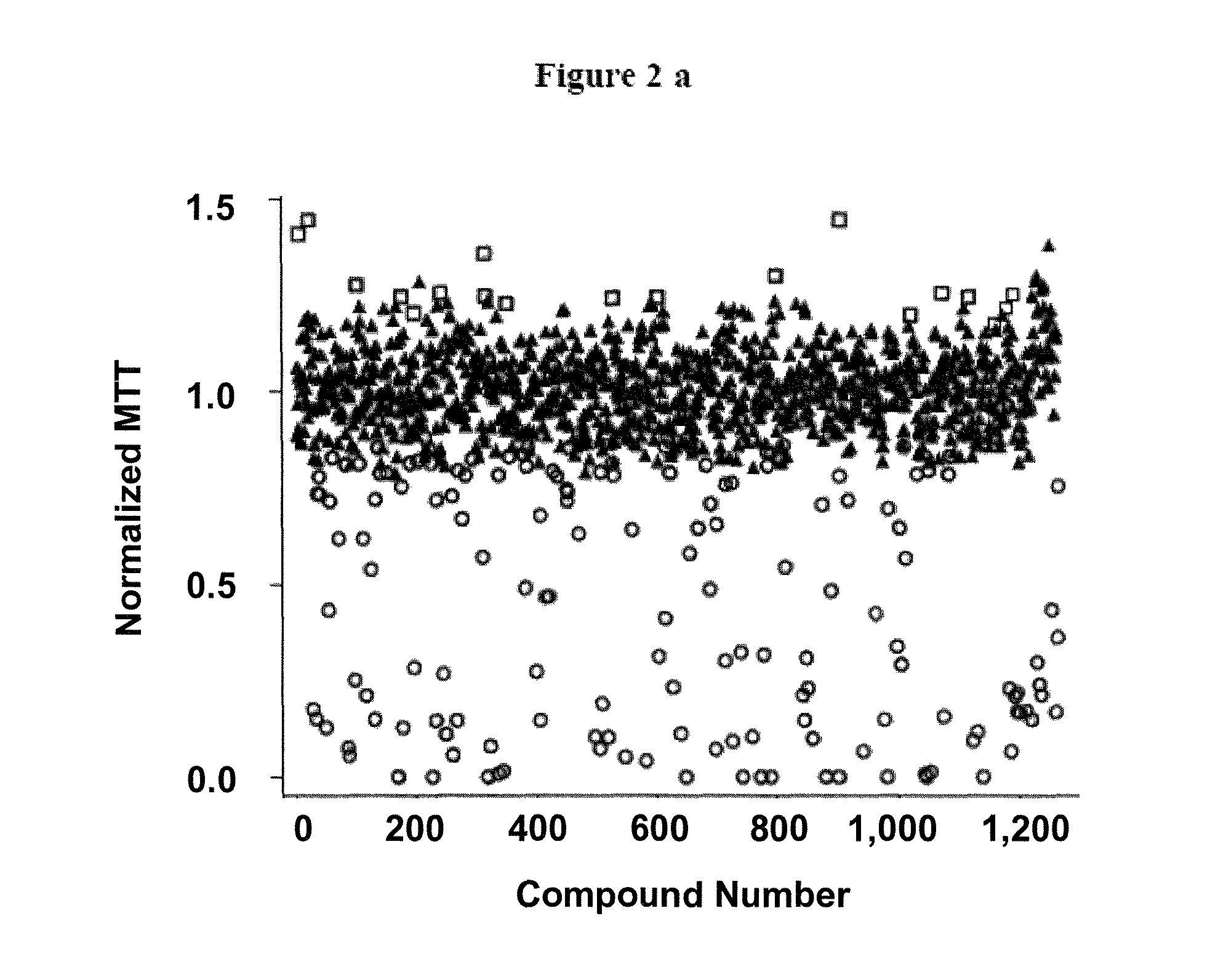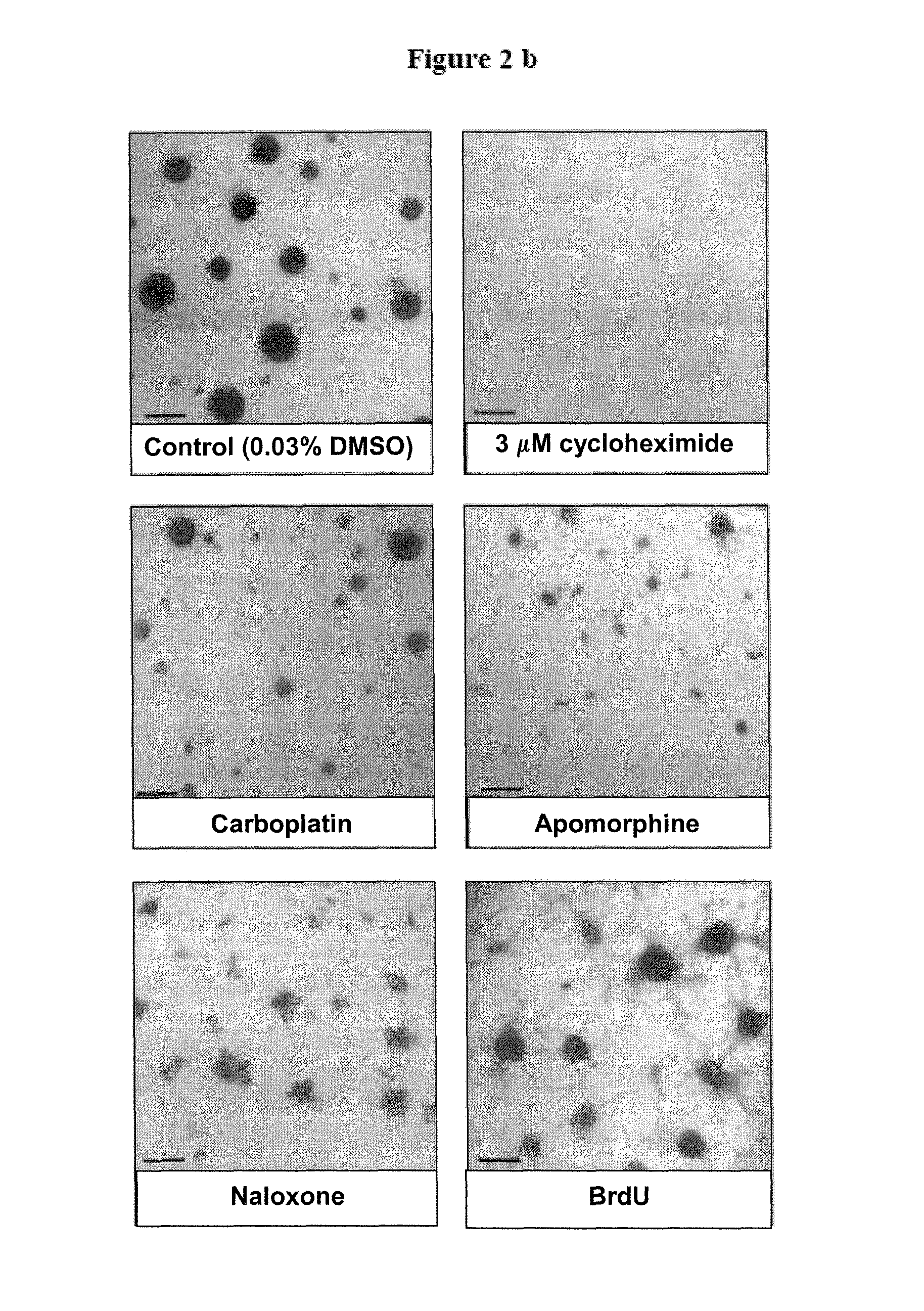Method for treating a brain cancer with ifenprodil
a brain cancer and ifenprodil technology, applied in the field of brain cancer treatment with ifenprodil, can solve the problems of nsc “ground state”—defined by the complete repertoire, differentiation—and remain largely uncharacterized, and achieve the effect of reducing the number
- Summary
- Abstract
- Description
- Claims
- Application Information
AI Technical Summary
Benefits of technology
Problems solved by technology
Method used
Image
Examples
example 1
[0114]Small molecule high throughput screens in complex cell-based assays hold great promise for drug discovery but have not yet been widely applied to primary precursor cells (1). A library of 1,267 pharmacologically active compounds was screened against clonogenic colonies derived from murine neural stem cells (NSCs). From 160 initial hits, 12 potent and selective inhibitors of both normal and cancerous neural precursor cell proliferation and self renewal were characterized. These inhibitory compounds spanned a broad range of neurotransmission modulators, suggesting that the NSC may be anchored in a complex “ground state” in which proliferation and cell fate determination are regulated by myriad neural signaling pathways (2,3). These findings suggest that the mechanism of action of neuroactive drugs must be re-evaluated in the context of the NSC and that redeployment of clinically approved agents may afford a potent means to treat intractable CNS tumors. (4,5).
[0115]Although the c...
example 2
[0129]The cancer stem cell hypothesis posits that important functional analogies exist between normal neural stem cells (NSCs) and brain tumor stem cells (BTSCs). New insights into human brain tumour biology and treatment will thus likely emerge from further study of normal neural stem cells. These parallels have recently been exploited in a chemical genetic screen that identified a surprising repertoire of neurotransmission modulators that inhibit the growth of both NSC and BTSC cultures in vitro (see Example 1). Prompted by these findings, an investigation was conducted to determine whether epidemiological evidence supports a hypothesis that brain tumors might be regulated by neurotransmission pathways in vivo. Analysis of previously published retrospective studies suggests that patients with a wide variety of neuropsychiatric disorders exhibit a decrease in brain tumor incidence. This reduction may derive from the use of drugs that collaterally affect the neural stem cell compart...
example 3
[0136]To profile the signaling network of primary cultures of neural precursor cells (NPCs), 1,267 compounds were screened in the library of pharmacologically active compounds (the LOPAC™ library) for inhibitors of neurosphere proliferation, as measured by incorporation of the vital dye thiazolyl blue tetrazolium bromide (MTT) (FIG. 1a and FIG. 2a and Table 10). A Z¢ factor (16) of 0.78 and a Pearson correlation coefficient of 0.981 for replicate screens indicated that the assay was reliable. 160 compounds that significantly inhibited neurosphere proliferation (Pb).
[0137]To verify hits from the primary screen, 43 representative candidates were retested at the original screen concentration of 3 mM; of these, 40 (93%) showed significant activity (Po0.05) (Table 8). Because other neural cell types express and signal through a number of neurotransmitter receptors (42), the selectivity and potency of each agent were assessed for a normal mouse astrocyte cell line versus NPCs. Dose-respon...
PUM
 Login to View More
Login to View More Abstract
Description
Claims
Application Information
 Login to View More
Login to View More - R&D
- Intellectual Property
- Life Sciences
- Materials
- Tech Scout
- Unparalleled Data Quality
- Higher Quality Content
- 60% Fewer Hallucinations
Browse by: Latest US Patents, China's latest patents, Technical Efficacy Thesaurus, Application Domain, Technology Topic, Popular Technical Reports.
© 2025 PatSnap. All rights reserved.Legal|Privacy policy|Modern Slavery Act Transparency Statement|Sitemap|About US| Contact US: help@patsnap.com



